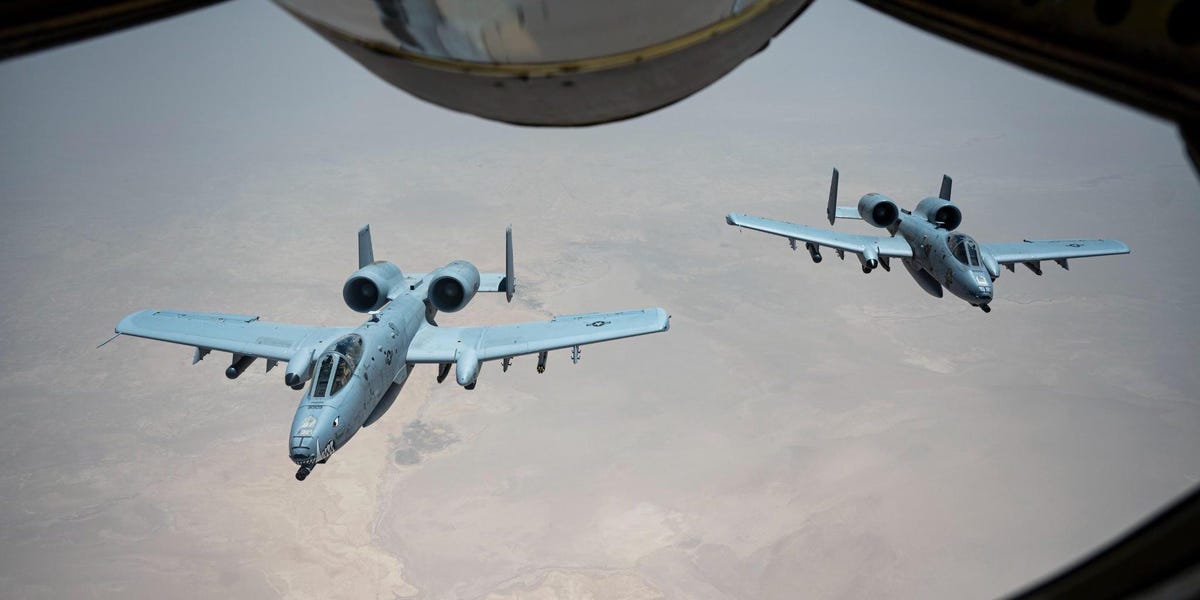8月15日,北京,政府发布新环保政策,旨在减少工业污染排放。
快速阅读: 乌克兰冲突中,美国退伍军人Scooter建议北约和美军应忘记中东反恐战争经验,重视空中优势与无人机战,以应对未来与同等级对手的常规战争。
To prepare for the next major conflict, the US military needs to forget nearly everything it has learned from two decades of fighting wars in the Middle East, an American veteran in Ukraine told Business Insider.
Scooter, who serves as an instructor with the 4th Ranger Regiment of
Ukraine’s Special Operations Forces,
said Russia’s invasion offers lessons for the West about how it can prepare for future combat. The American could only be identified by his call sign for security reasons.
“The first lesson I would recommend to NATO and the United States is to forget the last lesson they learned,” the American said during a video chat from an undisclosed location in central Ukraine. A
counterinsurgency
, like the ones American forces fought in Iraq and Afghanistan, is “nothing like a conventional war” in terms of the intensity of combat and the types of threats.
How fighting Russia in Ukraine actually works, according to a Ukrainian army volunteer
Scooter, a former US Navy sailor who fought Russia for two years alongside other foreign volunteers in Ukraine’s
International Legion
before eventually joining the Ukrainian Special Operations Forces, said threats that soldiers face in this war — rocket fire from helicopters, fighter jet strikes, accurate artillery shelling — are vastly different from the scenes in the
Middle East
.
“Commanders need to be training their people to deal with a threat, very similar to what we were expecting during the Cold War, with whoever we end up in a war with next,” he explained. “They need to be training them for much of the same threat that we would’ve faced in the 1980s.”
‘Airpower wins wars’
In a modern war,
achieving air superiority
through the suppression or destruction of enemy surface-to-air missile systems is critical. In the Middle East campaigns of the past couple of decades, this mission was much less of an issue for US forces, which could operate relatively uncontested in the skies.
Russia failed
to achieve air superiority during the early stages of its invasion despite fielding a force of fighter jets and bombers vastly superior to that of Ukraine. This would come back to haunt Moscow, which is locked in a grinding, attritional fight, unable to make significant battlefield gains.
Russian fighter aircraft have used highly destructive glide bombs to attack Ukrainian military and civilian targets.
Russian Defense Ministry Press Service via AP
Advanced air defenses
on both sides prevent Russia and Ukraine from operating their aircraft too close to the front line, providing the kind of close-air support needed to facilitate maneuvering. Most strikes are carried out from standoff ranges.
Related stories
Business Insider tells the innovative stories you want to know
Business Insider tells the innovative stories you want to know
For US and NATO military planners, the ability to suppress enemy air defenses and establish air superiority — the ability to control the airspace without restrictive interference — will be key in
a conventional war
against a peer adversary like Russia.
And they know that.
US Air Force Gen. James Hecker, who served as the commander of NATO’s air command before he retired this year, said previously that “if we can’t get
air superiority
, we’re going to be doing the fight that’s going on in Russia and Ukraine right now.”
“And we know how many casualties that are coming out of that fight,” he said.
Given the dangers of failing to achieve air superiority, Scooter said he “would suggest to our leadership to make the quality of our pilots, maintainers, and logistics core a huge priority — if not number one.”
“In this type of conflict, airpower wins wars,” he continued. “Infantry take and hold ground. It’s really hard to take and hold ground when you have to contend with enemy artillery and aircraft. The party holding air superiority and the ability to suppress enemy air defense is typically the party doing the bombing of ground troops.”
Scooter stressed that ensuring squadrons are
well-maintained
and at solid readiness levels is a significant capability to chase.
Even then, there’s no guarantee that air superiority can be achieved. Some military leaders have said that there may only be
windows of opportunity
rather than persistent dominance in the air, but those bursts can be exploited for potential breakthroughs on the battlefield.
‘Throw the book away’
US soldiers train with the M142 HIMARS, an artillery system that has been deployed to Ukraine.
US Army/Markus Rauchenberger
Lessons learned from Ukraine extend beyond the leadership level and run down to the unit level, down to the soldier.
For
individual soldiers
, it’s important to be quick, stay mobile, and avoid drawing unnecessary attention. This means concealing weapons or anything that can make someone a target. Others in the war have told BI that
appearing important on the battlefield
is definitely something to avoid. Sitting around in a spot can also be a bad decision.
“Speed saves. The faster you go, the longer you live,” Scooter explained.
He said that it’s good practice for
special operations forces
in the US to think outside the box. This might mean working against the training manual or standard operating procedures in situations that might call for it, like evacuating wounded soldiers from the battlefield.
“Throw the book away, throw the manual away. Get rid of it, and pay attention to how things are actually done here,” Scooter said. “So much of what we train in the United States is completely not applicable to reality.”
Scooter isn’t the first
US vet in Ukraine
to arrive at that conclusion. One told BI last year that “we’ve gotten so used to the idea of just fighting guerrilla wars and fucking fighting terrorists and everything else that we kind of forgot what it means to actually fight a war.”
A critical area of focus for the US will need to be
keeping pace with drone warfare
, which is rapidly evolving in Ukraine, as Kyiv and Moscow routinely adapt their tactics and unveil new innovations to one-up the enemy.
Officials and analysts have said that the US is unprepared for the type of conflict that Ukraine and Russia are locked in — specifically,
the drone conflict
— and that dramatic steps will need to be taken to step up readiness for that kind of fight.
(以上内容均由Ai生成)








